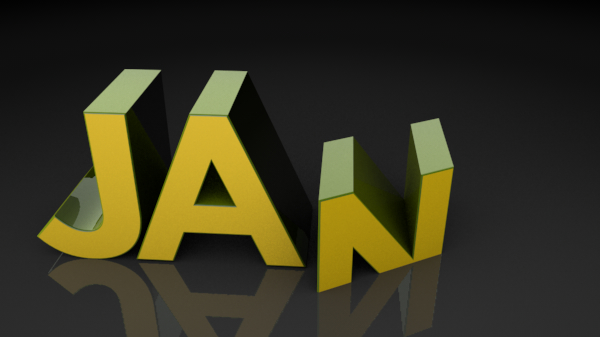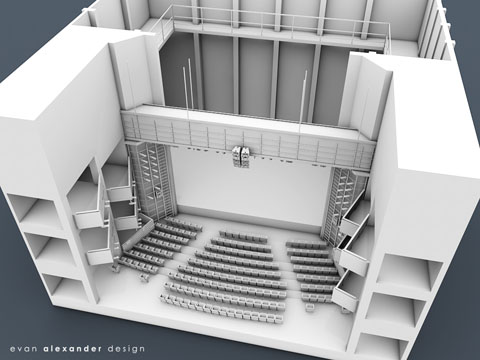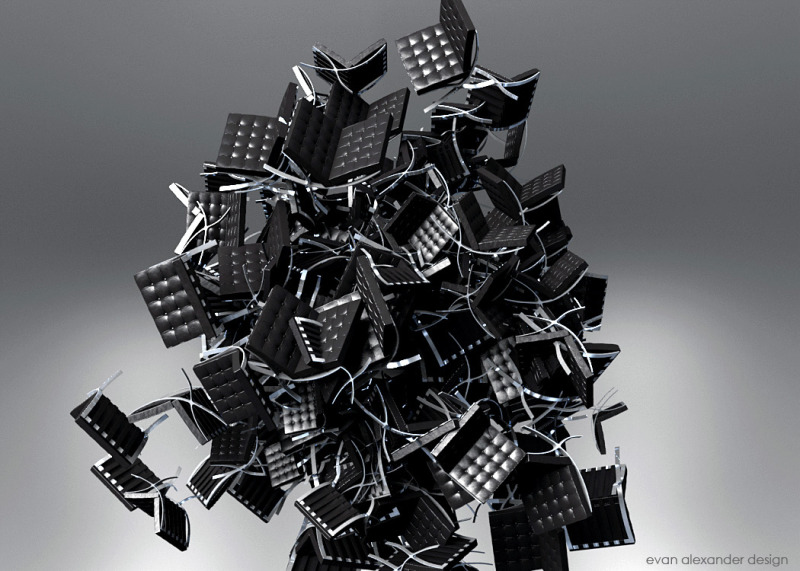Animation Test 004 from Evan Alexander on Vimeo.
More work with Cinema 4D and After Effects.Playing with After Effects for the first time for post production work. I've done color correction, lighting enhancements, and offset versions for motion blur and glow. You can see these overlays fade out at the very end. From the 3D, the letters unfold, rotate and rise through the floor while the camera pans right in a slight arc. The camera track is a bit off and makes the whole thing look like it's landed on a turntable. I have to spend a bit more time finessing the camera moves before rendering the 3D.
Here is a still from the raw render coming out of the 3D package so you can compare the post work before and after:

The next test is going to be something of more substantial length to compare render times with different formats. All of this is actually headed in a logical direction, through it won't be clear to you for a while yet; there is a plan for all of this.

Animation Test 002 from Evan Alexander on Vimeo.
More animation tests - working out file optimization and the backend system needs to do this on a larger scale for a longer time. Clearly, this is a sneak preview of Landshark: The Opera. I was inspired by a brief conversation I had with Bill Forrester about animating scenery this week. Bill has an ability to always show up at excactly the right time. Amazing.
Version 8 of evanalexander.com is now live and it looks....exactly like Version 7.
So, okay, not much of a facelift here, but the entire backend has been changed up to a new system so I can update and add content much quicker and more efficiently. Content updating and additions will start rolling out later today and be populated over the next few days.
 Working with cloning objects for faster rendering times: the clones take up less processing power for the computer.
Working with cloning objects for faster rendering times: the clones take up less processing power for the computer.
Once you clone your object, you can align them all in rows, or you can scatter them: randomly, resize, shift, tilt, etc. From there you are one step closer to global domination.
The only drawback seems to be the lack of collision detection, and you end up with intersecting geometry which breaks the illusion. There is a whole system to this with various ways to control the distribution of the objects. Needs more exploring, but amazing potential for real application.
Original chair model by: kok.t from the Luxology website.
Here is the first animation test I've done. A simple fly thru, but the possiblities are seeming endless for this.